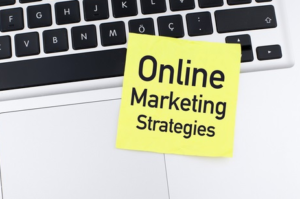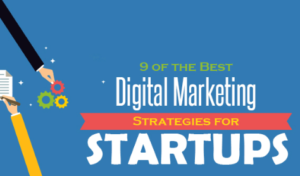Data-driven decisions are becoming increasingly commonplace in the modern digital marketing landscape. Through the correct use of analytics, businesses can gain valuable insights and information into customer behavior and use those insights to shape highly effective strategies that maximize revenue.
Analytics refers to the systematic collection and analysis of data from various sources. It involves understanding underlying information within large datasets using statistical techniques such as machine learning and AI algorithms. This type of analysis provides insights into customer behavior patterns which can be used to identify opportunities for improvement or optimization that would otherwise have gone unnoticed. By taking advantage of these insights, businesses can make decisions that have a direct and measurable impact on their bottom line.
Introducing data-driven decisions into digital marketing
Data-driven decisions can be introduced into digital marketing in several different ways. The most common approach is to use analytics tools like Google Analytics to follow website traffic and user behavior. It allows marketers to identify which channels drive the most conversions and adjust their strategies accordingly. Meanwhile, A/B testing provides an effective way to test different advertising campaigns or web designs and measure which performs best with customers. Finally, predictive analytics can forecast future customer trends based on past data.
The benefits of data-driven digital marketing
Data-driven decision-making allows digital marketers to make informed decisions based on collected customer information and statistics. This type of analysis enables businesses to improve their targeting capabilities, increase efficiency, and save money in the long run. Additionally, it eliminates much of the guesswork involved in forming successful campaigns and ensures that all efforts are concentrated in areas with the best chance for success.
Using data to shape digital marketing strategies
Analytics can shape digital marketing strategies from initial conception through post-implementation analysis. During the strategy formation stage, businesses can use data sources such as customer surveys and web analytics to understand their target audience and learn how to get more leads. It allows them to craft campaigns tailored to their customer’s needs and desires.
Additionally, analytics can be used during implementation to measure the effectiveness of various tactics and adjust plans accordingly. For example, if a tactic is not generating desired results, marketers can quickly identify which elements need improvement or alteration to achieve optimal performance. This type of iterative process ensures that resources are utilized most effectively.
In post-implementation analysis, analytics can measure campaigns’ success and identify improvement areas. By doing so, businesses can establish a continuous cycle of optimization that allows them to continually refine their strategies and maximize overall ROI.
Identifying suitable data sources
To leverage the full potential of data-driven digital marketing, it is essential to identify suitable data sources. One of the most commonly used data sources is customer surveys, which allow businesses to gain insights into their customers’ wants and needs. Social media analytics can also provide valuable insights into user demographics and interests. Web analytics, such as website visits or page views, provide further information regarding visitors’ behavior that can be used to refine campaigns and tailor messaging accordingly.
By combining these methods, businesses can compile a comprehensive picture of their target audience. It allows them to shape strategies with highly targeted messaging that resonates with their audience and drives desired results. Additionally, analytics can measure customer engagement through metrics such as click-through or conversion rates.
In addition to gathering customer information from external sources, businesses should also pay attention to internal data points such as employee performance or financial records. This information provides insight into team efficiency, campaign costs, and profitability. By tracking these data points over time, businesses can create an environment where decisions are informed by facts rather than intuition alone.
Utilizing automation and AI in analytics
The world of analytics is rapidly evolving, introducing new methods that allow businesses to gain even greater insights into customer behavior and preferences. Automation and AI tools are becoming increasingly commonplace in digital marketing, allowing marketers to automate data collection or analysis tasks. It helps maximize efficiency by freeing employees from mundane tasks and enabling them to focus their attention on more complex aspects of campaign management.
Additionally, automated systems can analyze large datasets and draw meaningful conclusions faster than manual methods. For example, AI-powered programs can identify correlations between variables that may not be immediately obvious upon inspection. By leveraging these technologies, businesses can optimize campaigns more accurately than ever.
Prioritizing data security and privacy
Businesses must consider data security and privacy when utilizing analytics in digital marketing. Companies should ensure that all collected information is stored securely and accessible only to those with the proper authorization. Additionally, they must ensure that customer or employee data is not being inappropriately used or shared without consent. Failing to adhere to data security regulations can lead to severe repercussions both in terms of financial penalties and loss of customer trust.
Conclusion
Data-driven decision-making is essential for digital marketing success today, providing invaluable insights that help marketers craft strategies tailored to their customer’s needs and desires. By leveraging analytical tools and processes, businesses can identify critical areas for improvement, better target customers, automate mundane tasks, and maximize their ROI from campaigns. With the right analytics platform, businesses of any size can reap the rewards of data-driven digital marketing.



